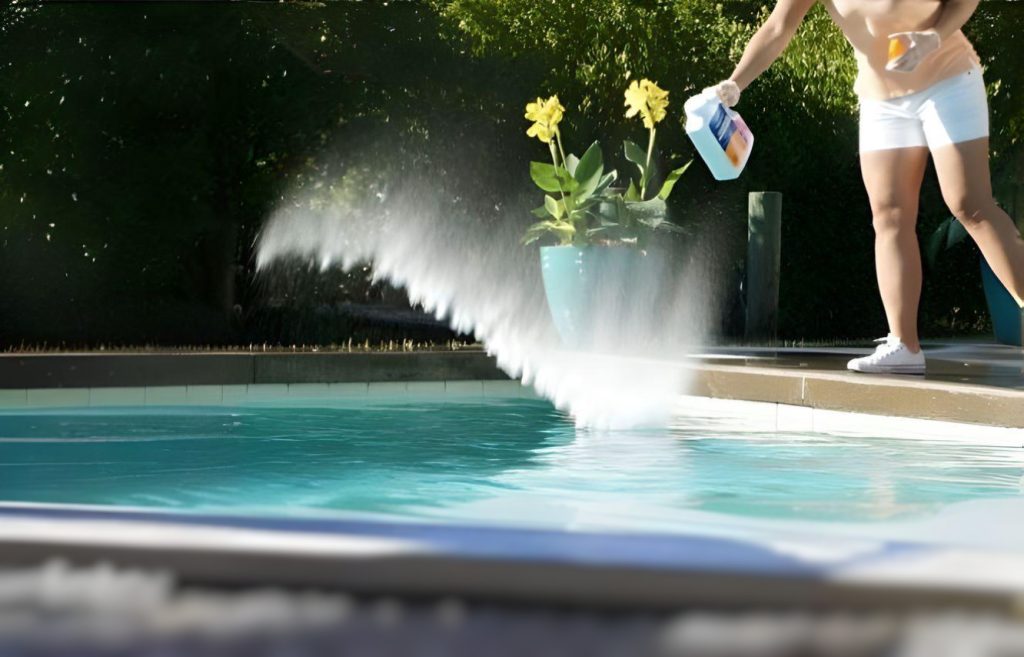Get ready to dive deep into the world of salt chlorine gеnеrators! In this comprehensive guide, we will unravel the secrets of salt chlorine generators and provide you with the ultimate solution for pool sanitation.
Discover how saltwater pools work and unlock the power of a chlorinator. We will delve into the inner workings and explain how this power system converts ordinary salt into chlorine and helps maintain more stable and balanced pool water.
With our expert insights, you’ll gain a clear understanding of the mechanisms behind a salty system and how it can revolutionize your pool maintenance routine.
Understanding The Basic Principles: How Does A Salt Chlorine Generator Work
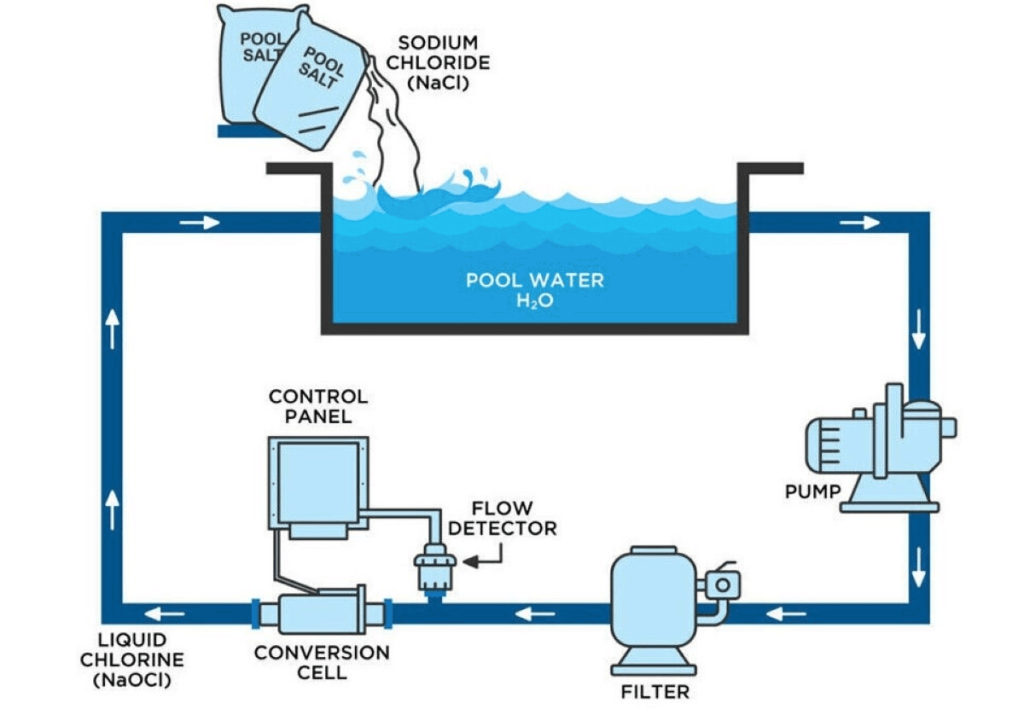
The salt gеnerator is an innovative system that provides automatic chlorine production for swimming pools, hot tubs, and spas. This generator is based on an electrolysis process that uses an electric current to break down salt into its components.
The main components of a salt chlorine generator are:
- Case. This is the outer shell that contains all the components of the chlorine generator and ensures their protection and safety.
- Salt cell. This is the space where the electrolysis of the salts takes place. It has two electrodes — an anode and a cathode. The cathode is made of metal, usually, stainless steel, and the anode can be made of different materials such as titanium or platinum.
- Power source. Every generator needs a source of electricity to create the electric current needed to electrolyze the salts.
Let’s take a closer look at the most critical elements of your generator, which determine its efficiency and longevity.
The Salt Cell Construction And Function
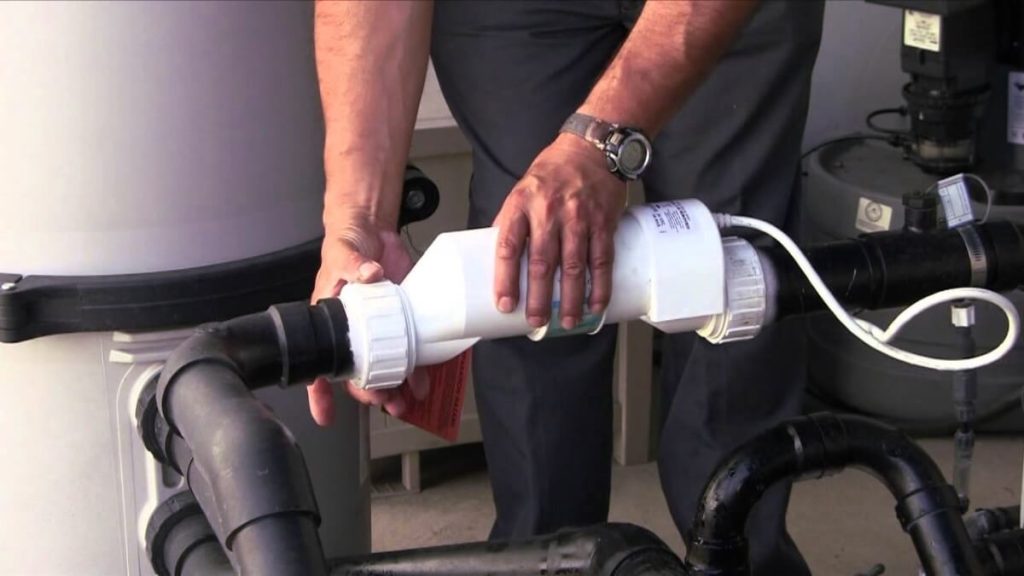
The salt cell is a crucial component of the whole system, its primary function is to convert dissolved salt in water into chlorine gas.
The salt cell consists of titanium plates or electrodes coated with a precious metal catalyst such as ruthenium or iridium. When an electric current passes through the salt unit, a process called electrolysis occurs. During electrolysis, the salted water flowing through undergoes a chemical reaction that separates the salt (sodium chloride) into sodium and chlorine ions.
Usually, the salt cell can come with the generator when purchased, and sometimes it can be purchased separately as a spare part. If your generator supports the replacement of an individual salt cell, you can extend the life of the generator after 5–7 years of use without having to purchase a whole new unit, just a new cell.
Generator Power Systems For Automatization
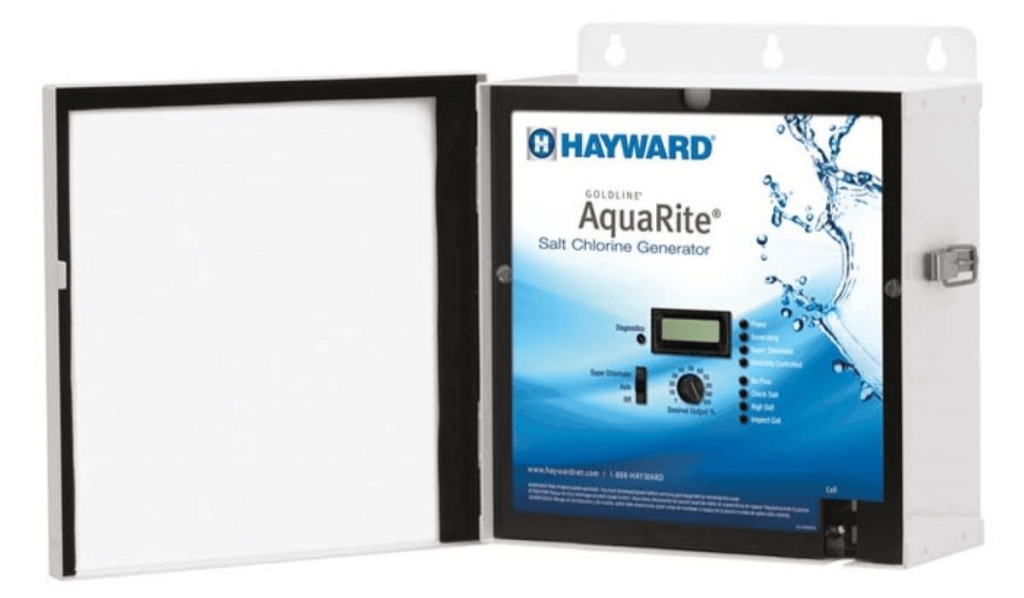
The power system supplies the electrical current required for the electrolysis process. This typically includes a power supply and a control device that regulates the current intensity to ensure optimal conditions for salt electrolysis.
Thanks to the power system, our generator can provide a constant flow of chlorine and enable easy automated control of the production proper level for disinfection of water.
The power source for salt systems can vary depending on the specific model and manufacturer. They are typically designed to be an integral part of the generator but can be sold separately.
As for the lifespan of power systems, they are generally durable and long-lasting. However, the exact longevity can vary depending on factors such as usage, maintenance, and overall product quality.
The Benefits and Disadvantages Of Using Salt Chlorine Generators For Water
While salt generators offer several benefits for pools and hot tubs, they may not be suitable for every situation, so it is highly recommended to learn about how a salt chlorinator works, what it can bring to your water maintenance, and what consequences of using a salt chlorination system may wait for your pool.
Pros
Firstly, let’s take a look at an expanded list highlighting the advantages of using a salted system.
🤗 Convenience. Generators eliminate the need for manual addition of chlorine to the pool. Once installed, it automatically produces chlorine, reducing the effort required for pool maintenance.
💸 Cost savings. Over time, using a salt can be more cost-effective compared to continuously purchasing and replenishing traditional chemicals.
🔁 Continuous chlorination. A pool generator ensures a steady and consistent level of chlоrine in the pool water thanks to its power system. It helps maintain optimal water quality and sanitization without the need for frequent monitoring and adjustment.
👀 Reduced irritation. Salted pools are often perceived as gentler on the skin and eyes, reducing the likelihood of irritation or dryness typically associated with chlorine-treated pools.
💧 Softer water. The addition of salt can contribute to a slightly softer water feel, which some swimmers find more pleasant.
🧹 Low maintenance. While regular maintenance is still necessary, salt chlorine generators generally require less maintenance compared to other sanitation methods.
Cons
So what about the common disadvantages of using a salt chlorine system?
💦 Corrosion risks. Salted environments can be corrosive to certain pool equipment and surfaces. Make sure your existing pool equipment is compatible with a saltwater system. Most pools can be converted, but it is very important to make sure that the pump, filter, and other components are designed to handle salt water. If not, you may need to replace some equipment. Contact a local professional or check your equipment on the manufacturers’ websites for salt compatibility.
🏊 Limited effectiveness in high-demand situations. Generators have a specific chlorine production capacity. In high-demand situations, such as when the pool is heavily used or during extreme heat or heavy rain periods, the generator may struggle to keep up with the chlorine demand. In such case, you will need to indicate which additional chemicals and dose you should add to water.
⚡ Dependence on electricity. Such systems rely on electricity to operate and generate chlorine. It’s important to ensure a stable power supply, as power outages or electrical issues can temporarily disrupt chlorine production.
💥 Impact on pool finishes and materials. Saltwater pools may have an impact on certain pool finishes and materials. Some finishes, such as certain types of tile or stone, may experience accelerated wear or discoloration in a saltwater environment.
It’s important to assess your specific needs, pool type, and budget before deciding whether a salt chlorine generator is the right choice for your pool or hot tub.
Managing Salt And Optimal Chlorine Levels In Your Chlorine Generator
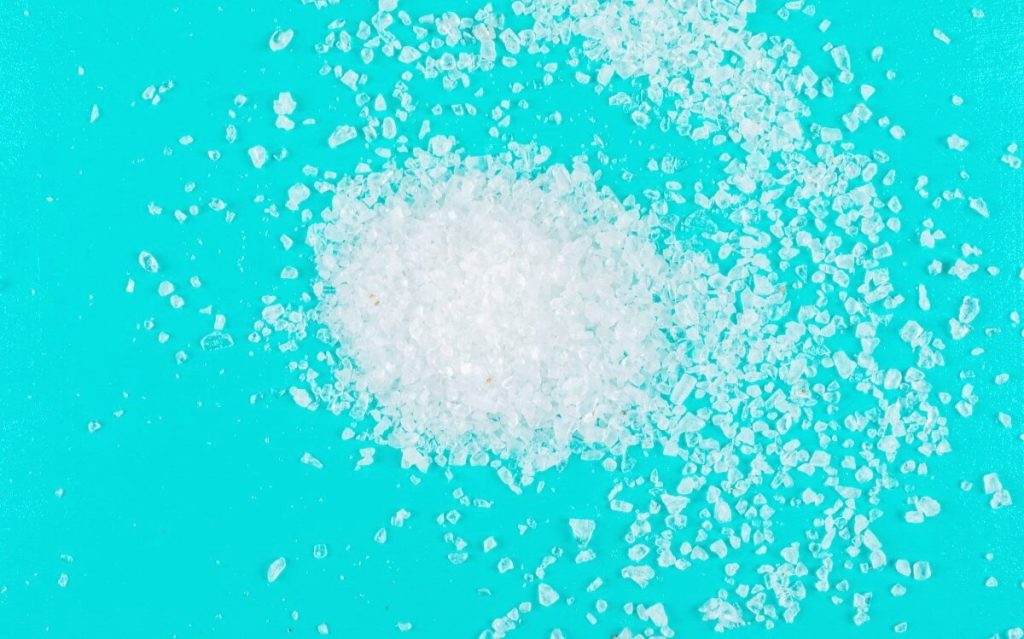
Generators require a specific concentration of salt in the pool water to produce chlоrine effectively. The proper level of chlоrine ensures that the pool water remains properly sanitized and free from harmful bacteria and algae. But how can we ensure that the water’s salt and all levels are appropriate?
Salt Level
Firstly, you need to have a test strip for measuring. They work just like regular test strips for water’s pH or chlorine level of water.
Before you start testing, ensure the pool is operational and the chlorinator is properly maintaining the optimal salt level. Instructions are usually provided by the manufacturer of the unit, but on average it is usually around 2500–3500 ppm.
Dip the strip into the water and wait a few seconds. Then remove the strip and read the results. The color that corresponds to the salt level will appear on the strip. If the colors on the strip indicate low salt levels, you may need to add some salt to your water.
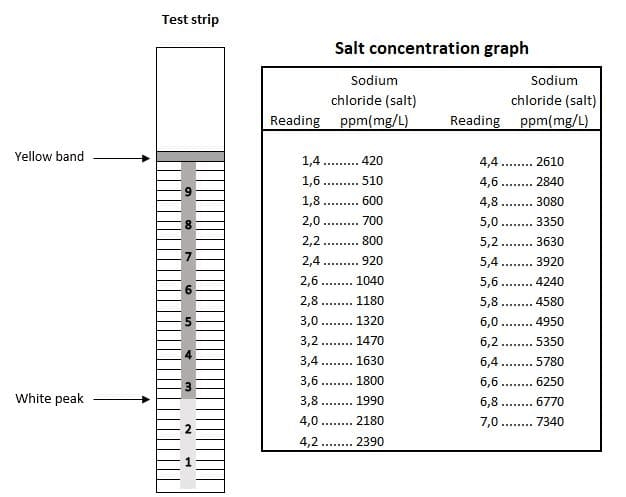
After adding the salt, you should wait for a while for it to dissolve completely in the water and then retest to make sure that the level has increased properly.
Chlorine Level
Here you will also need to use a special test kit. It usually comes with test strips or reagents that change color depending on the level of chlorine in the water.
First, dip the test strip into the water or add a few drops of the reagent to a test tube of water. Then wait for a while and compare the color on the strip or the color change in the test tube to the scale that came with the kit.
If your level is too low, it may indicate the need for a more intensive generator or the addition of salt. If the chlоrine level is too high, you may need to reduce the system’s intensity or the amount of salt.
pH And Water Chemistry In Harmony With A Pool Salt Generator
Even with the most efficient salt chlorine generators, it may be necessary to use additional chemicals to maintain optimal water chemistry.
When it comes to pH and water chemistry, saltwater pools have some unique considerations. The pH level should be maintained between 7.2 and 7.8 for optimal chlоrine effectiveness and the swimmers’ comfort.
Total alkalinity plays a role in stabilizing the pH. Keep it between 80 and 120 ppm by using alkalinity increasers or decreasers.
Calcium hardness should be maintained within the range of 200 to 400 ppm. Low levels can cause corrosion, while high levels can lead to scaling.
It’s important to regularly test the water and ensure that all levels are within the appropriate ranges. The generator’s system primarily takes care of chlorine production, but additional chemicals are often needed to maintain balanced water chemistry for optimal pool conditions.
Summary
Today we dived into the fascinating realm of saltwater pools and explore how they work alongside salt chlorine generators. We also discovered the inner workings of a salt cell and the intricate process of salt chlorination and gained insights into the functionality of a salt chlorine generator, a key component of the salt chlorination system.
By exploring the benefits and drawbacks of salt generator pools, you can easily decide if a salt system will work for your needs and be confident in its results.
Now you got a deeper understanding of how these systems work together to create a clean and refreshing swimming experience. With our expert guidance, you are equipped to maintain a saltwater pool and harness the power of a salt chlorine generator with confidence.
FAQ
🧂 How to make chlorine from salt?
Chlоrine can be produced from salt by using electricity to separate the chlоride ions in saltwater and convert them into chlоrine gas. Saltwater gеnerators utilize a similar principle of electrolysis, providing a continuous supply of chlorine for pool sanitation.
🧪 What chemicals are in a pool salt generator?
In a gеnerator, the primary chemical involved is sodium chloride or salt. When the water passes through the generator’s cell, it undergoes electrolysis, breaking down into chlorine gas and sodium hydroxide. The gas acts as a disinfectant, while the sodium hydroxide helps to balance the pH levels.
⏳ How long does a salt generator take to make chlorine?
The time it takes can vary depending on the size of the generator and the pool’s needs. Generally, it takes several hours to generate enough for maintaining proper pool sanitation levels.
👍 Is a salt chlorination system better than chlorine?
A salt chlorination system offers several advantages over traditional chlorine sanitation methods. It provides a more convenient and consistent supply of chlorine, eliminates the need for manual addition, and reduces the potential for skin and eye irritation caused by handling harsh chemicals. However, the choice between a salted and a traditional system ultimately depends on personal preferences and specific pool requirements.
🧊 How does a salt cell work?
A salt cell, a key component of a chlorination system, works through electrolysis, using a low-voltage electric current to convert salt into chlorine gas and sodium hydroxide. This process provides a continuous supply of chlorine for pool sanitation.


